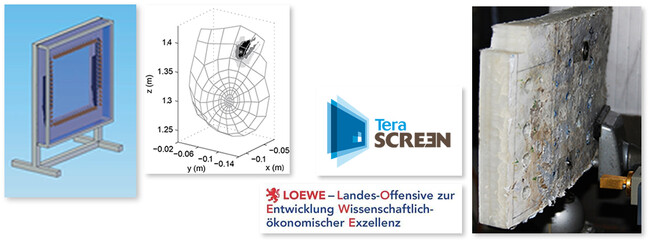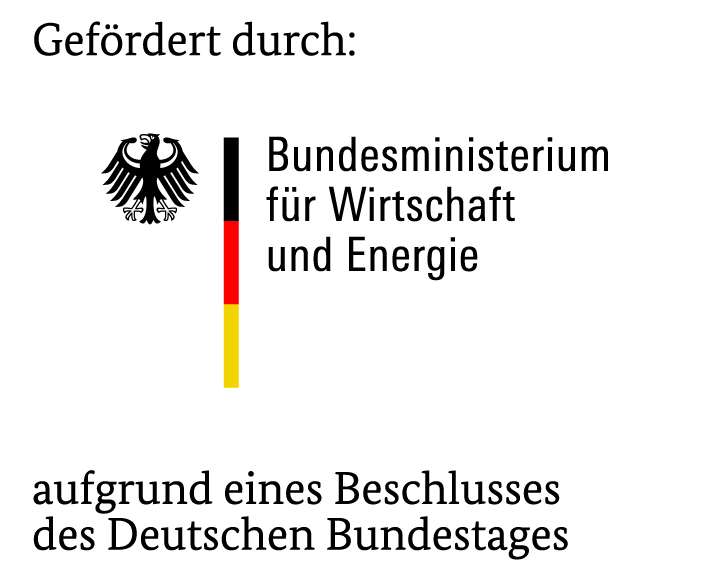CELTA
Convergence of Electronics and Photonics Technologies for Enabling Terahertz Applications (CELTA)
CELTA project aims to develop applications and complete systems for sensing, instrumentation, imaging, spectroscopy, and communications utilizing the terahertz technologies. Goethe Leibniz Terahertz Center focuses on two aspects. First one is the investigation and design of plasmonic detectors with integrated antenna structure and their further application for high resolution camera. Second one is the design and the integration of components for a millimeter-wave imaging radar front-end.
More information http://www.celta-itn.eu/
Publications:
2018
Conferences:
Mbeutcha, G. Ulisse and V. Krozer, “Millimeter-wave imaging radar system design based on detailed system radar simulation tool,” 2018 22nd International Microwave and Radar Conference (MIKON), Poznan, Poland, 2018, pp. 517-520.
Mbeutcha, T. K. Johansen, Y. Dong, B. Cimoli and V. Krozer, “Replicability of a millimeter-wave microstrip bandpass filter using parallel coupled lines,” 2018 2nd IEEE MTT-S Latin America Microwave Conference (LAMC), Arequipa, Peru, 2018 [in press].
Kęstutis Ikamas, Justinas Zdanevičius, Lukas Dundulis, Sandra Pralgauskaitė and Alvydas Lisauskas, Dovilė Čibiraitė, Daniel Voß and Viktor Krozer, Hartmut G. Roskos „Quasi Optical THz Detectors in Si CMOS”, 22nd International Microwave and Radar Conference, no. 1570425647, 2018. https://ieeexplore.ieee.org/document/8405336
Dovilė Čibiraitė, Maris Bauer, Adam Rämer, Serguei Chevtchenko, Alvydas Lisauskas, Viktor Krozer, Wolfgang Heinrich, and Hartmut G. Roskos, „AlGaN/GaN HEMT-based THz Detectors for a High-Resolution THz Camera“, 62nd International Conference for Students of Physics and Natural Sciences, Vilnius, Lithuania, 2018. http://www.openreadings.eu/wp-content/uploads/2018/03/knyga-after.pdf
Zdanevičius, D. Čibiraitė, K. Ikamas, M. Bauer, J. Matukas, A. Lisauskas, H. Richter, V. Krozer, H.-W. Hübers, and H. G. Roskos, “Field-Effect Transistor Based Detector for Measuring Power Fluctuations of 4.75-THz Quantum-Cascade Laser-Generated Radiation”, 29th IEEE International Symposium on Space Terahertz Technology, Pasadena, California, USA, March 26-28, 2018. https://www.nrao.edu/meetings/isstt/papers/2018/2018132134.pdf
Kęstutis Ikamas, Dovilė Čibiraitė, Maris Bauer, Alvydas Lisauskas, Viktor Krozer, and Hartmut G. Roskos “Ultrabroadband Terahertz Detectors Based on CMOS Field-Effect Transistors with Integrated Antennas” in Infrared, Millimeter, and Terahertz Waves (IRMMW-THz), 2017 42nd International Conference on, 2018, pp. 1- 2. doi: 10.1109/IRMMW-THz.2018.8510062 https://ieeexplore.ieee.org/document/8510062
Journals:
Alvydas Lisauskas, Kęstutis Ikamas, Sylvain Massabeau, Maris Bauer, Dovilė Čibiraitė, Jonas Matukas, Juliette Mangeney, Martin Mittendorff, Stephan Winnerl, Viktor Krozer, and Hartmut G. Roskos, “Field-effect transistors as electrically controllable nonlinear rectifiers for the characterization of terahertz pulses”, in APL Photonics, vol.3, no. 5, 051705, 2018. doi: 10.1063/1.5011392, http://aip.scitation.org/doi/10.1063/1.5011392
Kęstutis Ikamas, Dovilė Čibiraitė, Alvydas Lisauskas, Maris Bauer, Viktor Krozer, and Hartmut G. Roskos, “Broadband Terahertz Power Detectors based on 90-nm Silicon CMOS Transistors with Flat Responsivity up to 2.2 THz”, IEEE Electron Device Letters, vol. 39, no. 9, p. 1413-1416, 2018. doi: 10.1109/LED.2018.2859300, https://ieeexplore.ieee.org/abstract/document/8418740/
Justinas Zdanevičius, Dovilė Čibiraitė, Kęstutis Ikamas, Maris Bauer, Jonas Matukas, Alvydas Lisauskas, Heiko Richter, Till Hagelschuer, Viktor Krozer, Heinz W. Hübers, and Hartmut G. Roskos „Field-effect transistor-based detectors for power monitoring of THz quantum cascade lasers”, Transactions on Terahertz Science and Technology, vol. 8, no. 6, 2018. https://ieeexplore.ieee.org/document/8536434
Ikamas, A. Lisauskas, S. Massabeau, M. Bauer, M. Burakevič, J. Vyšniauskas, D. Čibiraitė, V. Krozer, A. Rämer, S. Shevchenko, et al., „Sub-picosecond pulsed THz FET detector characterization in plasmonic detection regime based on autocorrelation technique“, Semiconductor Science and Technology, vol. 33, no. 12, 2018 Nov. http://iopscience.iop.org/article/10.1088/1361-6641/aae905
2017
Conferences:
Lisauskas, M. Bauer, K. Ikamas, J. Zdanevičius, D. Voß, D. Čibiraitė, V. Krozer, and H. G. Roskos, “High-performance THz detectors in 90 nm Si CMOS technology,” in 9th THz Days, 2017, pp. 1. Non peer-reviewed, Link: https://9th-thz-days.univ-littoral.fr/wp-content/uploads/2017/06/9THzDays_Final_Program2.pdf
Cibiraite; M. Bauer; A. Lisauskas; V. Krozer; H. G. Roskos; A. Rämer; V. Krozer; W. Heinrich; S. Pralgauskaite; J. Zdanevicius; J. Matukas; A. Lisauskas; M. Andersson; J. Stake, “Thermal noise-limited sensitivity of FET-based terahertz detectors,” in Noise and Fluctuations (ICNF), 2017 International Conference on, 2017, pp. 1–4. doi: 10.1109/ICNF.2017.7986008, http://ieeexplore.ieee.org/document/7986008/
Kęstutis Ikamas; Alvydas Lisauskas; Maris Bauer; Adam Rämer; Sylvain Massabeau; Dovilė Čibiraitė; Marek Burakevič; Serguei Chevtchenko; Juliette Mangeney; Wolfgang Heinrich; Viktor Krozer; Hartmut G. Roskos, ”Efficient detection of short-pulse THz radiation with field effect transistors” in Noise and Fluctuations (ICNF), 2017 International Conference on, 2017, pp. 1–4. doi: 10.1109/ICNF.2017.7985961, http://ieeexplore.ieee.org/document/7985961/
Čibiraitė, M. Bauer, A. Rämer, S. Chevtchenko, A. Lisauskas, J. Matukas , V. Krozer, W. Heinrich , H. G. Roskos, “Enhanced performance of AlGaN/GaN HEMT-Based THz detectors at room temperature and at low temperature,” in Infrared, Millimeter, and Terahertz Waves (IRMMW-THz), 2017 42nd International Conference on, 2017, pp. 1- 2. doi: 10.1109/IRMMW-THz.2017.8067118, http://ieeexplore.ieee.org/document/8067118/







